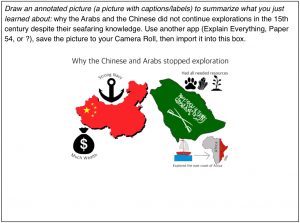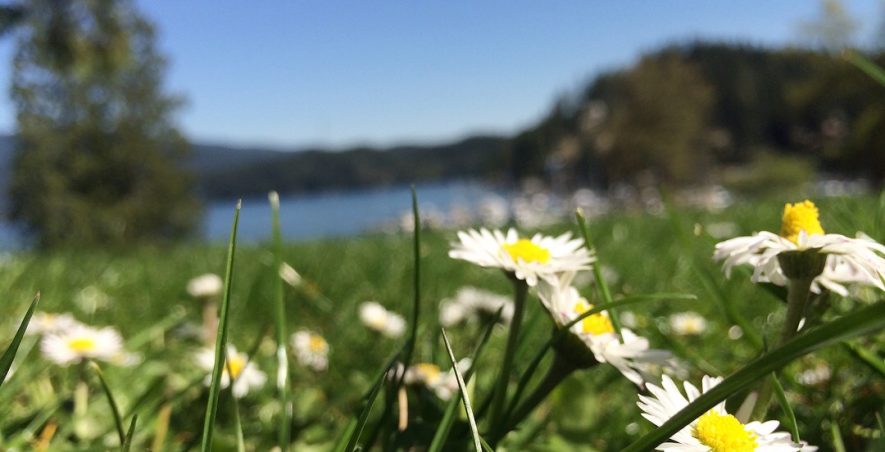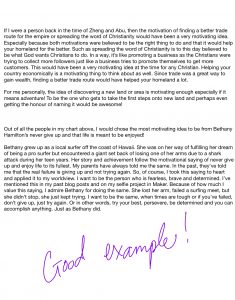Welcome back to my blog! In this unit we explored how the New World was formed. To begin, we had a short lesson on Beringia and how it helped form what we know as the New World. Beringia was an ancient land bridge from Siberia to Alaska that existed about 20,000 years ago which for us is a long long time ago! So of course, this land bridge no longer exists. Beringia helped form the New World as it created a passage for both animals and people to access a land full of more resources, hence forth known as the human migration from Asia to America.
As time went on, the Norse, Portuguese and Chinese voyaged in search of land and goods. The Norse occupied mainly smaller coastal areas on the Southwestern coast of Greenland.  However, settlements in Greenland later declined due to the cooling of climate, threat to agriculture, the trade of the ivory market and finally, many people became victims of one of history’s most deadly deceases, the Black Death! The Portuguese and Chinese, on the other hand, eventually stopped their explorations in the 15th century as both countries had what they needed. The Portuguese, had multiple resources and began to explore the coasts of Africa, and the Chinese had a strong Navy and much wealth.
However, settlements in Greenland later declined due to the cooling of climate, threat to agriculture, the trade of the ivory market and finally, many people became victims of one of history’s most deadly deceases, the Black Death! The Portuguese and Chinese, on the other hand, eventually stopped their explorations in the 15th century as both countries had what they needed. The Portuguese, had multiple resources and began to explore the coasts of Africa, and the Chinese had a strong Navy and much wealth.
These people were not the only ones to explore, the Europeans were big on exploration at the time. Their motivation or “means to explore“ was to fill in the blanks of their mental map and to discover the world beyond their home. This was mostly caused by the European’s growing curiosity. At the time, their knowledge of the outside world came from books which were based off of either religion or illogical guesses. Most of that information turned out to be nothing but nonsense.
Shortly after these few classes of introduction, we were assigned an explorer. This was meant to help us learn how he persuaded people to fund his voyage as we would be doing the same at the end of the unit.  The explorer I chose was John Cabot, which I later discovered had less than a paragraph written about him on Wikipedia😬! To begin, we read about different things that could have motivated our explorer to go on his voyage. For some, it was the desire to gain wealth, expand their trade or gold supply or even to expand the understanding of Christianity. Which even today is believed to be an act greatly praised by God. We then were asked to write a short paragraph about someone that was motivated to do something. It could have been anyone, but I chose Bethany Hamilton. I mentioned Bethany in one of my previous posts but always seem to come back to her inspirational story as it is very powerful. To learn more about Bethany Hamilton, view my paragraph by click on the image below⤵️ or by simply clicking on the link in her name.
The explorer I chose was John Cabot, which I later discovered had less than a paragraph written about him on Wikipedia😬! To begin, we read about different things that could have motivated our explorer to go on his voyage. For some, it was the desire to gain wealth, expand their trade or gold supply or even to expand the understanding of Christianity. Which even today is believed to be an act greatly praised by God. We then were asked to write a short paragraph about someone that was motivated to do something. It could have been anyone, but I chose Bethany Hamilton. I mentioned Bethany in one of my previous posts but always seem to come back to her inspirational story as it is very powerful. To learn more about Bethany Hamilton, view my paragraph by click on the image below⤵️ or by simply clicking on the link in her name.
Let’s fast forward this lesson a bit. As time went on, everyone seemed to want a piece of this “New World.” While everything about the Americas was new to the Europeans, from the plants, to animals, to food, this land was however NOT unfamiliar to the aboriginal natives. These people were there long before the Europeans arrived. For a while, the two nationalities were peaceful with each other. Each group trading with each other. The name “Canada” actually comes from an Aboriginal word, “Kanata” which means “village”. The word was, however mistaken by the Europeans for the name of the area and therefore, the land was named Canada.
Talking about trades, the next part of our studies was the Middle Passage.  This was the sea route people took to trade slaves from Africa. What was cool about this lesson was that we were reading about it from different points of view. Depending on who you were reading from, the Middle Passage, although filthy and terrible as it was, was presented to us while keeping each person’s individual goals in mind. From the ships captain, he described the job as gross, tiring and frustrating as the slaves kept dying which meant less money for himself. From a slave’s point of view, it described how life would be better dead than alive.
This was the sea route people took to trade slaves from Africa. What was cool about this lesson was that we were reading about it from different points of view. Depending on who you were reading from, the Middle Passage, although filthy and terrible as it was, was presented to us while keeping each person’s individual goals in mind. From the ships captain, he described the job as gross, tiring and frustrating as the slaves kept dying which meant less money for himself. From a slave’s point of view, it described how life would be better dead than alive.
As we shifted gears more towards our final project, we studied comics to prepare for when we would have to create our own comic to help with our final presentation. We were divided into groups. Each group would read a different genre of comic each week and complete a column for each genre. This gave us an idea of how comics are designed such as their use of shading, pictures, bleeds and so on. Click the link below to view our chart!⤵️
Comic Book Comparison Chart-1p9dfro
I wrote my comic based on what I knew about explorer John Cabot. The comic was set in the time estimated when he voyaged as well as keeping in mind the general story on what happened during the voyage. I used the knowledge I had learned on comic layouts and design to create my comic. I then had to add myself into the story, so since girls rarely were on boats as part of the crew at the time, I made myself a stowaway. For more of my story, click on the picture below!⤵️
Finally, it was time to present the big presentation. As I mentioned before, we had to persuade the Queen to fund us for a voyage. I created a PowerPoint and a script that I would read. I also used examples from my past voyage (my comic) to help both visually and persuasively. The following video is of my presentation.
As I wrap this post up and begin preparing for my next, I kind of thought about how people wanted to expand their knowledge which then made curiosity and voyaging part of their worldview! I also thought about how just as the people wanted to expand, I want to try to expand and grow my mindset! That has been one of my many goals this school year. Anyways, I hope you enjoyed this post and thanks for reading!















